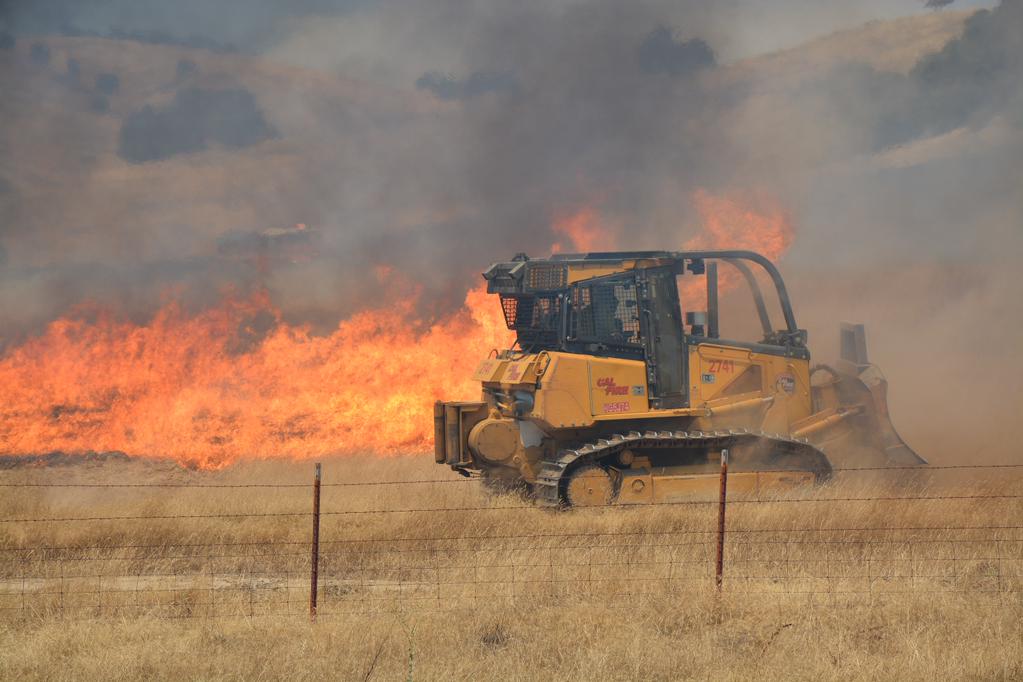
The difficulties in hiring and retaining wildland firefighters which has resulted in one-third of the Forest Service firefighter positions in California being unfilled, may not be restricted to just those who directly battle the flames. The old axiom, “amateurs think strategy, generals think logistics,” does not only apply to the military. If firefighters can’t be supplied with food, water, vehicle maintenance, hose, tools, fuel, and communications they will not be successful in a long campaign.
The concept of firefighters ensuring that before they engage, they must have adequate Lookouts, Communications, Escape routes, and Safety zones (LCES) was developed by Paul Gleason. It is shorthand for combining a list of Standard Orders fire personnel must follow to protect themselves from fireline hazards such as being entrapped in the fire. According to a report on SAFENET, there was a four-day period from May 15 until May 19 when the Communications leg of LCES was not covered adequately on the Hermits Peak/Calf Canyon Fire in Northern New Mexico.
The National Situation report for May 15 shows that in the United States that day there were 10 large uncontained fires, with all of the fires in the country being staffed by a total of 4,708 personnel. When the fire season nears its peak this summer there could be five times that many people assigned to fires. But in the middle of May there was a shortage of radio technicians and radio operators which made it impossible to set up an adequate radio communications system when it was needed on the north zone of the fire following a reorganization.
I was told by mentors as I came up through the ranks that firefighting is not an emergency — not to firefighters. It’s what we do. So when the situation gets suddenly more complex and decisions must be made and executed quickly, think calmly, act decisively, and communicate clearly. At least one of these suddenly complex situations occurred on the fire. A person needed medical treatment and extraction by air. It is referred to in the SAFENET as an incident within an incident. They are usually managed separately by an offshoot organization, and they always require efficient, robust, dependable, instant communication.
The text below is taken word for word from the SAFENET. The only change we made was to translate the acronyms.
Narrative
When Southwest Team 1 took command of the North Zone of the Hermits Peak/Calf Canyon Fire communications were unable to be linked with Incident Command Post (ICP). The zoning of the incident required the current radio communications system to be split. The North Zone remained on the current system with the South Zone moving to their own system. During this transition there were no radio techs to switch the repeater link for the North Zone and install the repeater to cover ICP. For a duration of 4 days, the link with communications at the ICP was ineffective. This was highlighted on 5/17 with a red medical that required extraction by air. During the Incident Within an Incident (IWI) communication were not able to function from ICP to the field and back. As the fire progressed, the repeater that was required for ICP was also needed to cover field personnel. Approximately, 300 personnel in the field had limited communications, with the only link established through a human repeater. During high fire behavior periods, several resources were forced to abandon tactics and leave the line because communications could not be established. The contributing factor, is the lack of radio techs available nationally. Orders were placed for radio techs days before transition and after transition. Orders for one week were returned unable to fill (UTF). Furthermore, radio operators were also unavailable. Orders were also placed for CAT personnel which was also UTF. The lack of communications personnel resulted in decrease support for the field and inability to coordinate IWI response and transport through ICP and the communications unit. About 1,200 firefighters were affected by the lack of communications with ICP.
The lack of communication personnel is limiting the “C” in “Lookouts, Communications, Escape Routes, Safety Zones” (LCES) and needs to be resolved at the national level. The trend of unable to fill communications personnel has progressively gotten worse over the last few years and will most likely result in incidents without communications in the future.
Immediate Action Taken
Field personnel had communications on the most fireline through the existing repeater system. Approximately, 25% of fireline personnel had no communications coverage which was unsatisfactorily resolved with a human repeater during the 4 days without a radio tech. Field Operations was utilized to coordinate response and transport for IWIs placing their self in a location with cell service and radio service. A radio tech was sent from the South Zone once their system was installed and working. That individual then moved to the North Zone on Day 4 to begin configuring the North Zone communication system. On 5/20, 4 days after transition, the North Zone communication system was operating providing coverage for ICP and the incident.
Other mitigations for correcting the problem took considerable time to no avail and included contacting commercial vendors, national guard and state compact agreements. The solutions did not pan out. Currently, land management agency fire organizations have no capacity for implementing a communications system on an incident without reliance on personnel outside of the fire organization.


